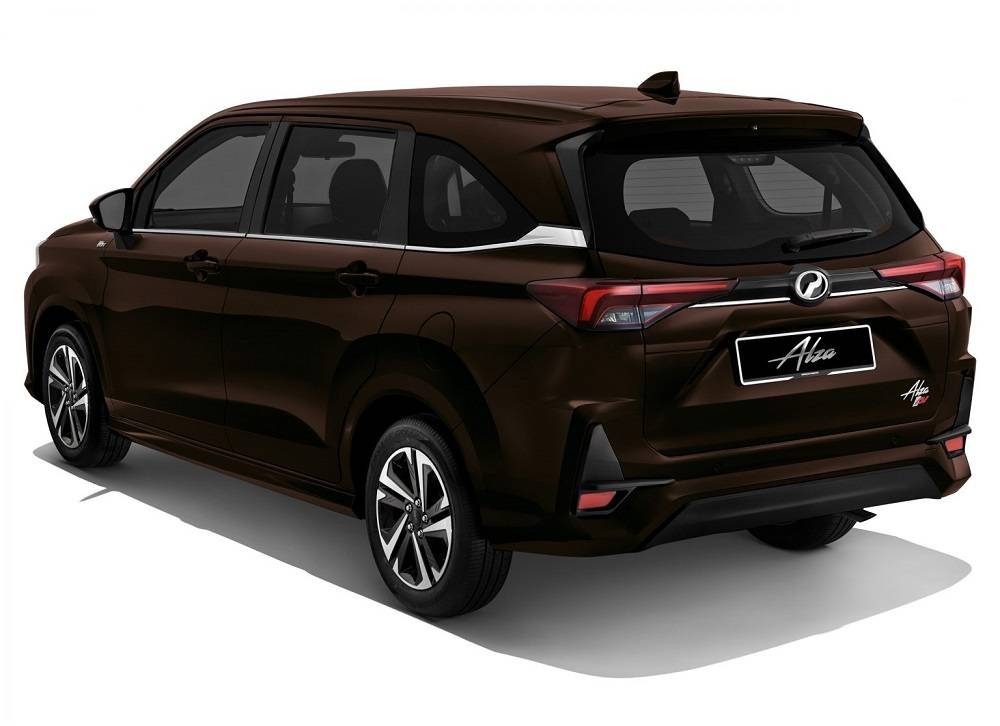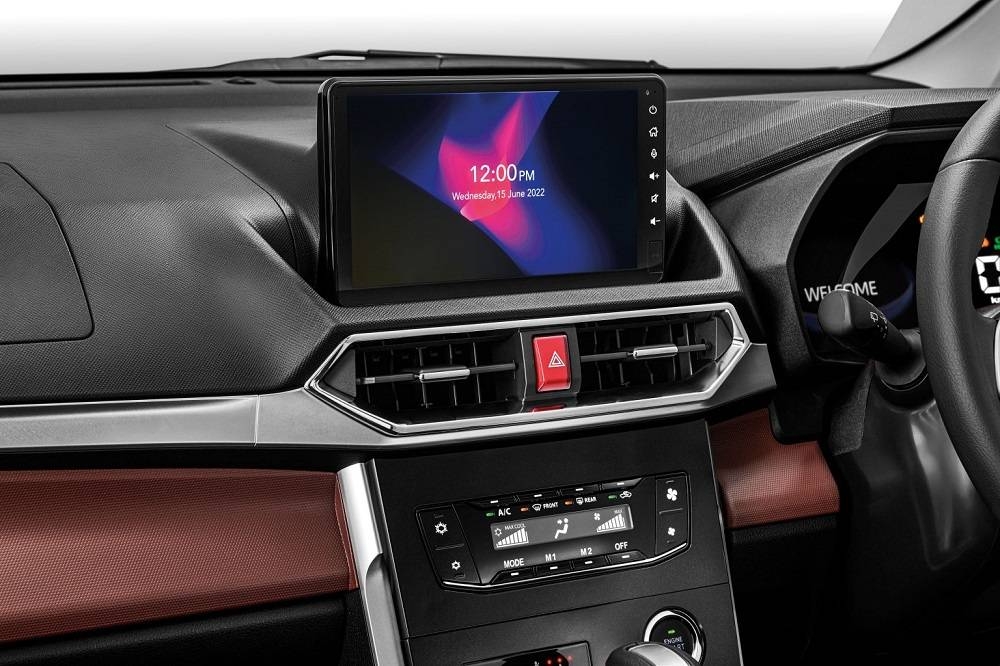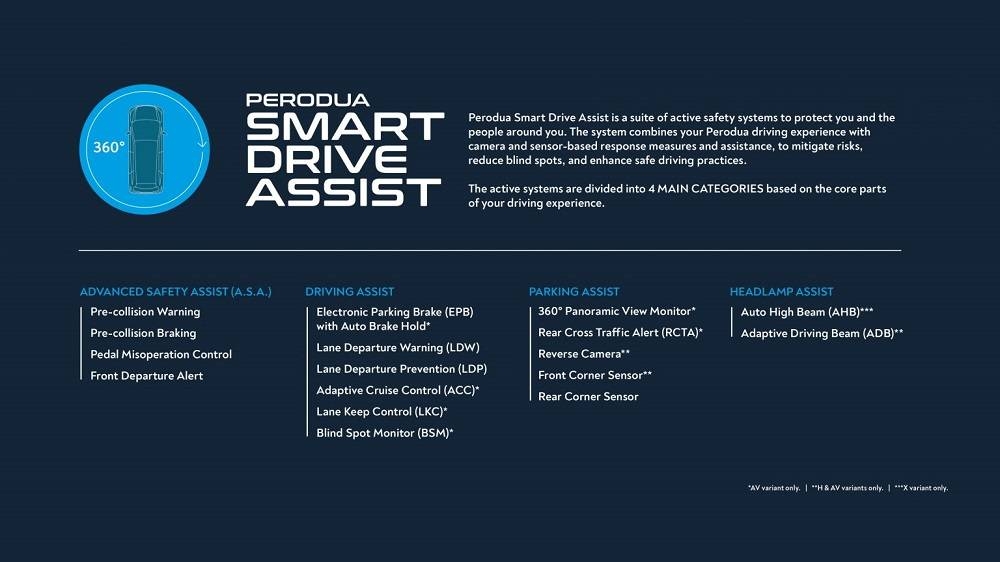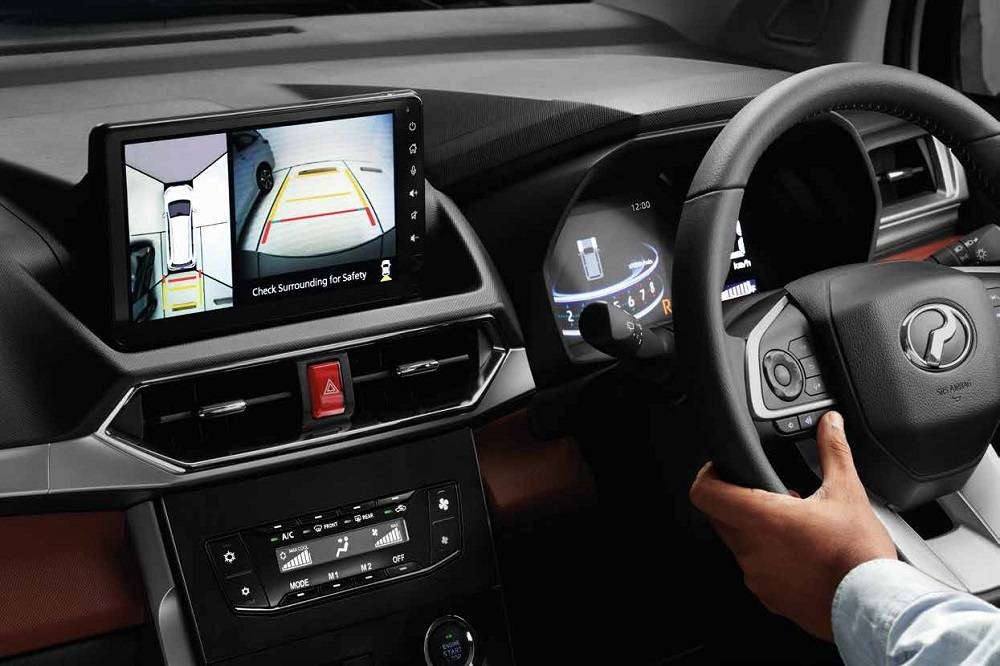KUALA LUMPUR, July 25 — Nearly 13 years since it was introduced, the Perodua Alza finally receives a second generation.
The seven-seater MPV has been redesigned from the ground up with a whole new platform, a radically different design, a more advanced engine and transmission and a slate of new technologies. Here are ten things you need to know about it.
It’s based on the Toyota Avanza/Veloz

Whereas the previous Alza was based on the Japanese-market Daihatsu Boon Luminas and Toyota Passo Sette, the new model shares its underpinnings with the latest Toyota Avanza/Veloz and Daihatsu Xenia. All three ride on the Daihatsu New Global Architecture (DNGA), which also forms the basis of the Ativa SUV.
This facilitates the Avanza’s switch from a semi — to a fully-monocoque; it also means the car is now front — instead of rear-wheel drive, with a torsion beam replacing the antiquated live axle. All this brings the Toyota more in line with the more passenger car-like Alza.
As with all extant Peroduas, the new Alza is built in Rawang at the Perodua Global Manufacturing (PGMSB) plant. As part of a contract with UMW Toyota Motor, the company is also set to produce the Veloz, similar to how it churns out the Rush alongside the closely-related Aruz. With the Alza taking up the lower end of the MPV market, the Veloz replaces the Avanza as a more upmarket option, equipped with more features.
It gets the Myvi’s engine and D-CVT

All variants are powered by the same 2NR-VE 1.5-litre naturally-aspirated Dual VVT-i four-cylinder engine, lifted from the Myvi. It makes 105 hp and 138 Nm of torque, sent to the front wheels through Daihatsu’s dual mode CVT (D-CVT), which uses both belt and gear drive to maximise efficiency.
Perodua claims a fuel consumption figure of 22 km per litre with the Eco Idle engine start/stop system turned on. This was recorded on the new Malaysian Driving Cycle (MDC), which the company says reflects local driving conditions. It’s evidently very optimistic, however — the car does 18.9 km per litre on the already generous New European Driving Cycle (NEDC), according to paultan.org.
It’s got Android Auto

Each variant of the Alza gets a different type of infotainment. The entry-level X is fitted with a very basic radio that takes up the space where a touchscreen would be, coming with USB and Bluetooth connectivity (but no steering wheel audio controls). Step up to the H and you’ll receive a nine-inch touchscreen, running on the same interface as the Ativa and facelifted 2022 Myvi.
The top-spec AV also features a nine-inch touchscreen, but it looks to be a completely different unit with a row of touch-sensitive buttons on the right-hand side. It’s not listed in the spec sheet, but paultan.org reports that the system supports wired Android Auto, but oddly, no Apple CarPlay. This makes the Alza the first Malaysian car to include this functionality from the factory.
Windscreen RFID tag comes as standard
Another feature not mentioned in the spec sheet is the inclusion of an RFID tag for toll payments as standard, enabling users to do away with Touch ‘n Go’s RM35 self-fitment kit. The sticker is located on the top left corner of the windscreen; it remains to be seen if this placement works better than on the left headlight — which TnG recommends — and reduces the instances of read failures.
Perodua has been very proactive in adding toll payment technologies directly to its cars — it gave the third-generation Myvi a built-in SmartTAG reader back in 2017 — and this is another example. Unfortunately, that SmartTAG reader remains exclusive to the Myvi, so it’s RFID or bust.
Level 2 semi-autonomous driving, standard AEB

The new Alza is the third Perodua to get the latest Perodua Smart Drive Assist (PSDA), after the Ativa and the facelifted Myvi. All models come with the basic Advanced Safety Assist (ASA) package that includes Pre-collision Braking (PCB, also known as autonomous emergency braking or AEB), Pedal Misoperation Control (PMC) and Front Departure Alert (FDA), along with Lane Departure Warning (LDW), Lane Departure Prevention (LDP, also known as lane keeping assist) and Auto High Beam (AHB).
The AV is the only model to get Adaptive Cruise Control (ACC) and Lane Keep Control (LKC, also known as lane centring assist) to provide Level 2 semi-autonomous driving capability, as well as blind spot monitoring. Six airbags and stability control come as standard.
It’s available with a 360-degree camera

Also exclusive to the AV is a 360-degree camera system, using cameras mounted on the front grille, tailgate and wing mirrors. The feed from these cameras are stitched to provide a top-down view of the car’s surroundings, making it easier to park the Alza. The H variant comes with a reverse camera instead, while the base X makes do with reverse sensors.
It gets an electronic parking brake

Another Perodua first is the inclusion of an electronic parking brake (EPB), operated using a toggle aft of the gearlever. With this comes the addition of an auto brake hold function which, as the name suggests, holds the brakes when you come to a stop, letting you take your foot off the brake.
This feature also enables the ACC to come right down to a standstill when following the car ahead. Perodua calls this a Stop, Hold/Follow function, but it’s also known as stop and go or low-speed follow. The EPB, which is another AV exclusive, necessitates the fitment of rear disc brakes.
It’s available with a 7-inch instrument display

Like the Ativa, the Aruz gets a seven-inch TFT LCD instrument display, although it’s only fitted to the H and AV models. It appears to have a similar design, with customisable layouts that include a novel disc-shaped rev counter. The screen should offer the same functionality as the Ativa’s, such as reminders for birthdays and even anniversaries. A separate segmented LCD speedometer sits on the right side.
Matrix LED headlights with Adaptive Driving Beam

Both the H and AV models receive matrix LED headlights, which uses several diodes for the high beams. This enables the Adaptive Driving Beam (ADB) function, which uses the windscreen camera to detect oncoming vehicles and turn off individual LEDs to block off certain parts of the high beams. This feature, first seen on the Ativa, allows the high beams to be turned on at all times without blinding other motorists.
Also lifted from the Ativa are the sequential LED indicators that create a pleasing scrolling effect when signalling left or right. Unfortunately, the Alza doesn’t get the LED daytime running lights that were fitted to the facelifted Myvi (you can add them on as part of the GearUp Prime bodykit, which costs RM2,500), although you do get LED fog lights instead.
It comes with a front dash cam

Like the Ativa and Myvi, the Alza is offered with a driving video recorder (DVR), more commonly known as a dash cam. Again, this is only offered on the range-topping AV variant. As with the other models, this unit should support up to 1440p resolution.
Perodua Alza 2022 pricing

Like the Ativa, the Alza is available in three variants, X, H and AV, with pricing significantly higher than the outgoing model. That isn’t an apples-to-apples comparison, however — the development of the old car had long been amortised to enable the low starting price, and the new one is not only built on a modern platform but also comes with a new engine and transmission combination and a slew of kit and tech. Below is the official on-the-road pricing in Peninsular Malaysia, with sales and service tax (SST) and without insurance:
- 1.5L X — RM62,500
- 1.5L H — RM68,000
- 1.5L AV — RM75,500
Even with the extra outlay needed, the new Alza represents excellent value for money — especially if the Myvi and Ativa are too small for you — with all models getting the same powertrain and much of the same safety kit. It’s also bigger than before, offering a 137-litre boot with all seats up (compared to just 83 litres on the old car) and a decent 498 litres (up from 348 litres) with the third-row seats folded. You now get rear air-conditioning, too.
The X looks quite basic but should satisfy most people’s needs, and it at least offers Bluetooth connectivity. The AV with its Level 2 semi-autonomous driving ability and Android Auto functionality is quite pricey but is still a great option for those looking for more — and crucially, it’s over two thousand ringgit cheaper than an equivalent (and likely far less refined) Aruz. — SoyaCincau






















